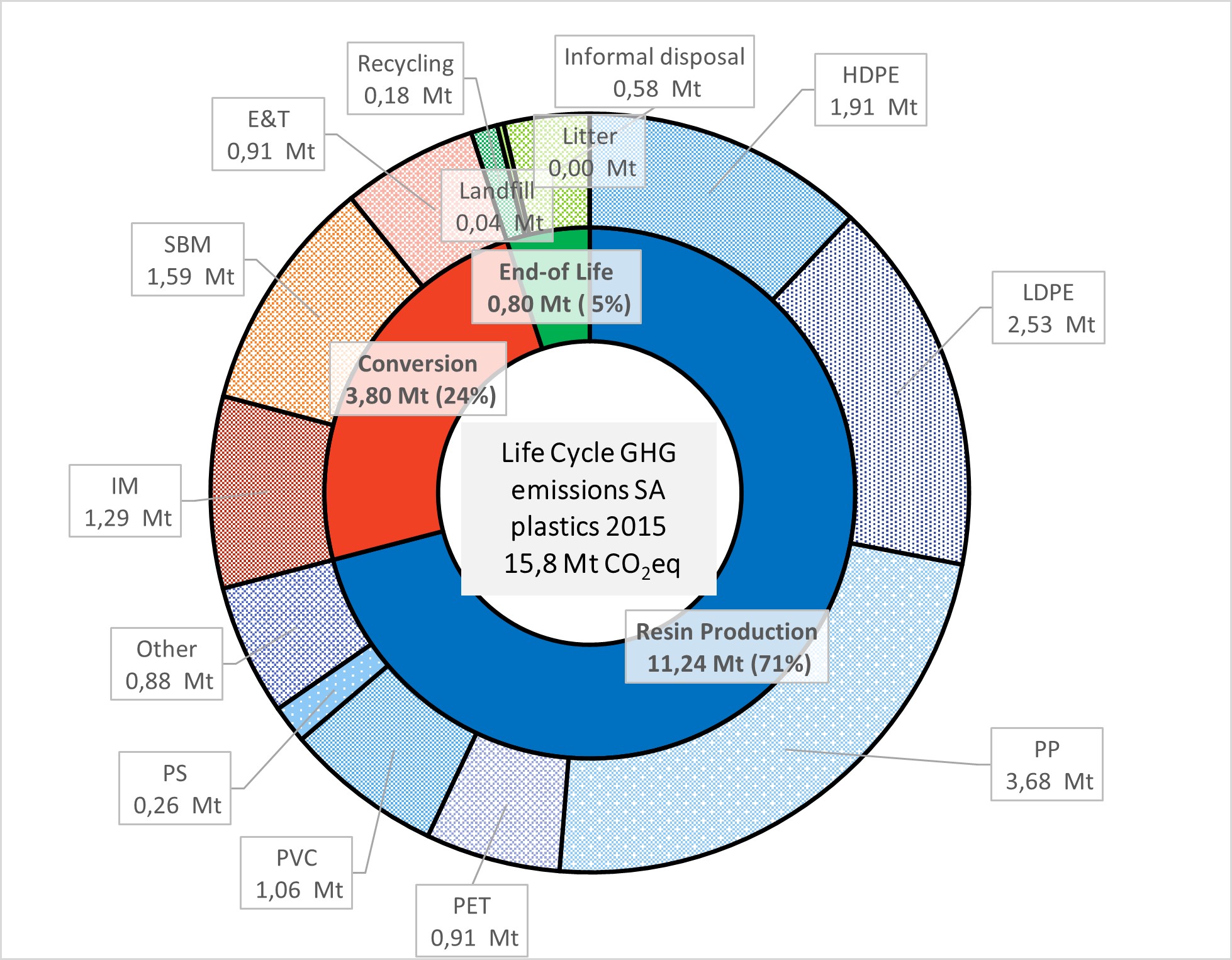The CSIR’s Taahira Goga and Dr Valentina Russo received the South African Journal of Science’s (SAJS) Outstanding Article Award for their paper on a lifecycle-based evaluation of greenhouse gas emissions from the plastics industry in South Africa. The paper was co-authored by Prof. H. von Blottinitz from the University of Cape Town and Prof. K. Harding from the University of the Witwatersrand.
The SAJS annually presents the Outstanding Article Award in recognition of peer-reviewed articles that advance the SAJS’s mission – to publish high-quality original research from Africa or on African-relevant issues that would be of interest to readers in any discipline and for the benefit of scholars, educators, the general public and policymakers. The winning article should make a significant contribution to knowledge and be eloquent and accessible to the broad SAJS readership.
Plastic is ubiquitous in everyday life and is widely used for its convenience, versatility and durability. Globally, a greater focus is placed on the problem of plastics being dominated by plastic litter and marine pollution, while less is known about the impact of greenhouse gas (GHG) emissions arising during the life cycle processes of plastics. South Africa’s total GHG emissions are 122% higher than the G20 average per capita, highlighting the need for its carbon dioxide (CO2) emissions to be minimised in major industries. As the 32nd largest producer of plastics globally and with one of the highest plastic consumption rates on the African continent, the South African plastics sector plays a significant role in the country’s environmental and economic future.
To bridge the knowledge gap, the study aimed to quantify the impacts of plastic in South Africa using a lifecycle-based approach and estimate the country’s annual GHG emissions (also known as the carbon footprint) from the plastics sector. The results indicate that the dominant sources of GHG emissions from the plastics industry in South Africa are resin production – the coal-to-liquid process to produce plastic monomer, which is unique to South Africa; electricity consumption which is powered by the national coal-based energy mix – and the practice of burning plastic waste.
Life Cycle Assessment (LCA) is a well-established methodology to quantify the environmental impacts of products and services along their value chain. However, the use of LCA is still limited across Africa, and studies have historically focused mainly on specific products. Loosely based on Zheng and Suh’s (2019) methodology, the study took the view of a national sector, the plastics industry, and applied a lifecycle-based approach to unpack the calculation of carbon emissions arising from major polymer production and local waste management practices (i.e., the post-consumption phase).
Setting the reference year to 2015, results indicate that the South African plastics sector emitted an equivalent of 15.8 megatons of CO2, with the granulate production stage responsible for the highest environmental load due to the local context where both electricity and monomer production are coal-based. Additionally, the findings showed that the practice of burning plastic waste also had a significant contribution. Furthermore, the process of recycling plastics can save approximately 1.4 megatons of GHG due to avoided virgin polymer production.
A supplementary study (Goga et al., 2022) extended the analysis by using industrial ecology tools, material flow analysis and life cycle assessment. Future projections show that increasing mechanical recycling rates to achieve national targets would start to significantly impact the virgin polymer demand (in the order of several billion rands of sales annually) but would also reduce waste disposal by 28% relative to the baseline growth in 2025.
The two scientific papers stemmed from Goga’s doctorate, which also explored several circularity and decarbonisation scenarios up to 2035 to investigate the potential of a future low-carbon and circular plastics sector in South Africa.
The research has been approved to be carried forward at the CSIR and funded by the Young Research Establishment Fund. The focus is on exploring the potential of tertiary recycling, which involves the chemical recycling of problematic plastics and assessing the local value chain from a socioeconomic perspective.
For more information on the CSIR’s research on plastic pollution, go to https://www.csir.co.za/sustainability-economics-and-waste and https://www.csir.co.za/SolvePlasticsAfrica.
#SolvePlasticsAfrica


Contact Person: Anton Nahman, @email,